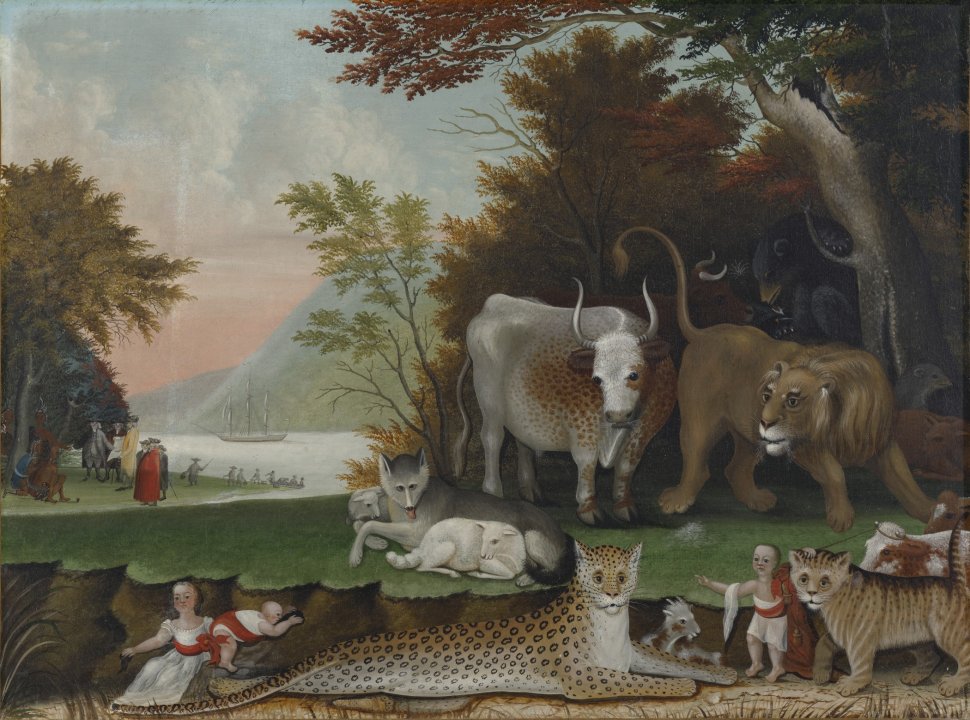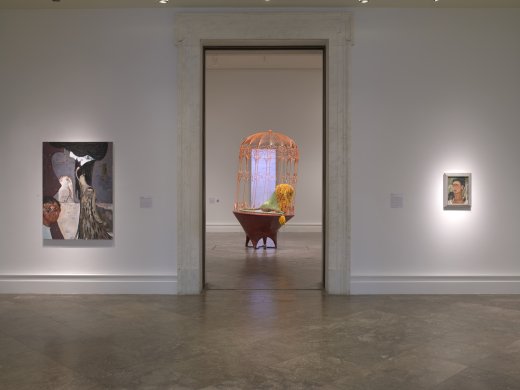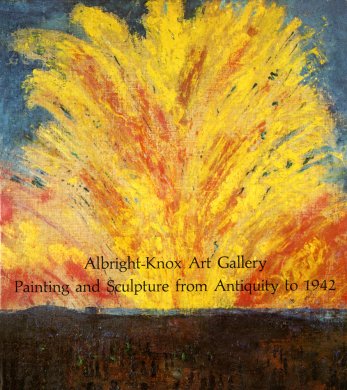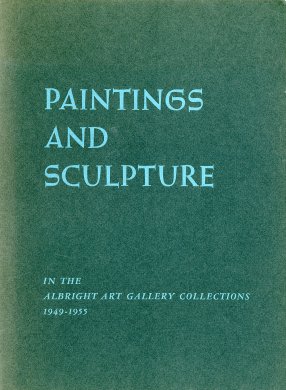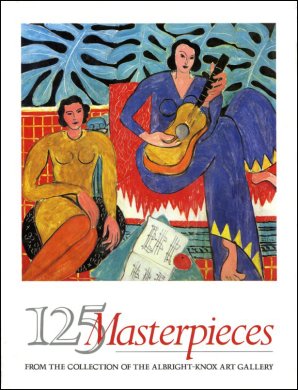Edward Hicks
American, 1780-1849
Peaceable Kingdom, ca. 1848
Artwork Details
Currently on View
Collection Highlight
Materials
oil on canvas
Measurements
support: 23 7/8 x 31 7/8 inches (60.6425 x 80.9625 cm); framed: 34 1/2 x 42 x 2 1/2 inches (87.63 x 106.68 x 6.35 cm)
Collection Buffalo AKG Art Museum
Credit
James G. Forsyth Fund, 1940
Accession ID
1940:18
Edward Hicks, who was also a Quaker minister, executed as many as one hundred versions of this painting. The theme is taken from the following passage from the biblical book of Isaiah, which is interpreted by Christians as a prophecy of the coming of Christ and the arrival of a peaceful world in which all animals and human beings live in harmony: "The wolf also shall dwell with the lamb, and the leopard shall lie down with the kid, the calf, and the young lion, and the fatling together, and a little child shall lead them. And the cow and the bear shall feed; their young ones shall lie down together; and the lion shall eat straw like the ox. And the suckling child shall play in the hole of the asp, and the weaned child shall put his hand in the cockatrice’s den."
In this adaptation, however, Hicks augmented the original story by weaving it into a page from American history. The scene takes place in Hicks’s home state of Pennsylvania. Here, it is not Christ who arrives. Instead it is William Penn (British, 1644–1718), the founder of Pennsylvania and fellow Quaker. Penn and his comrades are depicted signing the Treaty of Shackamaxon with the Lenni-Lenape Indians. The agreement, which was supposed to establish friendship and peace between the cultures, did not last long, and harmony soon turned to discord.
